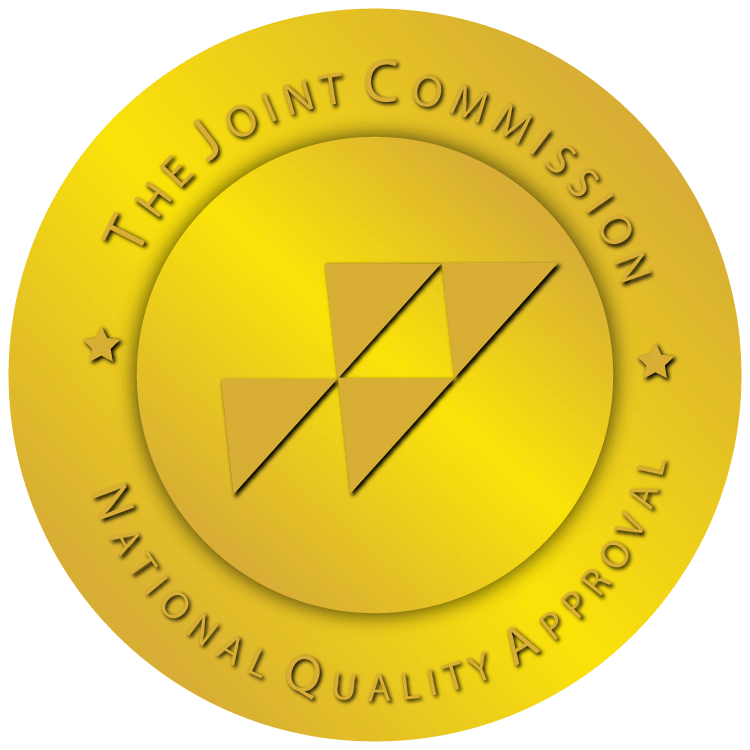
Most anyone who has ever experienced a substance use disorder (SUD), whether personally or via a friend or family member, is aware that there is no quick, convenient cure. Substance use can actually cause changes in the body and brain, which become reliant on substances to function. For that reason, the most effective treatments for SUD do not work overnight.
Instead, recovery is a journey that requires perseverance, determination, and long-term commitment, and the best treatment programs help individuals develop these qualities over time. Long-term rehab programs also allow the time for physical recovery while building the new skills and supportive structures necessary to sustain long-term recovery. Learn more about long-term rehab and how Maryland Recovery has developed a successful long-term program over the past ten years.
What Is Long-Term Treatment and Recovery?
Long-term treatment is precisely what it sounds like – a treatment program designed to last much longer than standard short-term programs. While short-term treatment programs typically last around 28-30 days, long-term rehab lasts 90 days. Over those 90 days, patients will participate in a combination of individual, group, and family therapies, support groups, and medication treatments.
Long-term programs are often residential, due to their extended nature. During long-term residential programs, patients live in a home or residential facility with their peers while working together to achieve recovery. Consequently, they are often the rehabs with the best success rates.
At Maryland Recovery (MRP), we provide a stable, substance-free residential environment designed to support patients during their long-term rehabilitation program. We recognize that extended or long-term programs are better for helping people overcome the deep-seated roots of their substance use in order to achieve long-term recovery and avoid a recurrence. To do so, every treatment program is personalized – programs are customized and structured to fit individual needs.

Treatment vs. Recovery
Treatment and recovery are distinct phases, as treatment refers to the time when a patient is actively engaged in a treatment program, whether in a residential facility or outpatient care. Recovery, on the other hand, begins the first day a person begins abstaining from substance use but is generally recognized to be in full effect after the successful completion of the treatment program. That’s because recovery is the ongoing process of maintaining and building on the progress made during treatment.
Benefits of Long-Term Rehab Programs
Long-term rehab can come with many benefits that short-term rehab does not. For most people, but especially those who may need additional time and attention during their recovery journey, these benefits can make it a much better choice. These benefits are typically attributed to the holistic approach to recovery made possible by long-term programs that address the physical, emotional, mental, and social aspects of SUD.
Higher Success Rate
Time is crucial for healing, and the long-term recovery model offers continuous care throughout the phases of SUD, from rehab to recovery. According to The National Institute of Drug Abuse (NIDA), people show the most improvement after approximately three months of research-backed treatment. This model surpasses the common 30-day program timeline set by the insurance industry, which was not backed by any real data. In fact, NIDA stated that the 90-day program is a “gold standard” for treating SUD.
At MRP, we have been providing long-term care for over ten years and have observed better results for our patients. While there is no standard measurement for success in rehab, the rate of SUD recurrence one year after treatment in a 90-day program is 15%. For a 30-day program, it is 38%.
(Note: 30-day treatment programs can and have been very helpful for some individuals to achieve lasting recovery, but the opportunity for success significantly increases at the 90-day level)
Life Skill Development for Sustained Recovery
Developing tools and strategies for life after SUD is the foundation of the recovery journey. Those in long-term treatment are afforded the time they need to work on critical thinking and problem-solving techniques, emotional intelligence, fostering empathy, improving communication skills, time management and task prioritization skills, and goal-setting. Other skills can include managing finances, meal planning, cooking, maintaining a household, and job readiness.
Life skills training reduces relapse rates by equipping individuals with effective strategies to manage their triggers and navigate life challenges. By learning how to make healthy decisions, establish boundaries, and understand the ability to say “no,” people can strengthen their ability to make positive choices in support of their recovery.
In addition to reducing the chance of relapse, research shows that a longer treatment increases a person’s likelihood of getting hired after leaving. According to a study by the Substance Abuse and Mental Health Services Administration (SAMHSA), those who actively participated in a treatment program for 90 days or longer were 22-43% more likely to have gained employment the year following treatment than those who went through a shorter treatment program.
High Level of Support
Support is essential in the recovery journey. At the beginning of this journey, a strong network of support is vital, and long-term rehab programs are capable of providing this at or above the level of a short-term program. Constant support is provided by treatment staff and peers in both individual and group sessions, so individuals can navigate the challenges of substance use disorder knowing they can seek a listening ear, helpful guidance, or strategies and skills whenever necessary.
The personalized care plan of a long-term program also provides targeted support for each individual. With ongoing assessment and monitoring from staff, adjustments can be made to ensure the support continues to be effective.

Fostering Community and Peer Relationships
In a long-term care setting, individuals have the opportunity to build a community and create new peer relationships with those who are also on their recovery journey. This can inspire a sense of belonging and reduce the feeling of isolation many people may feel while in recovery.
A network of supportive, recovering individuals can bring everyone together, celebrate milestones and achievements, reinforce healthy behaviors and choices, and provide support during challenging times through the shared recovery experience.
Focus on Mental Health and Emotional Regulation
Many people beginning recovery have a dual diagnosis, which means that both SUD and other mental health conditions are present at the same time. It can be difficult to handle mental health during treatment and recovery because many complex emotions can arise, such as anxiety and frustration. Often, too, SUD can be caused when people attempt to self-medicate to eliminate mental health symptoms, and removing the preferred substance can cause a recurrence of symptoms.
Long-term programs provide clinical therapies and self-care strategies to help individuals develop skills that can help them face their mental health struggles. In addition, peer and staff support systems can help individuals put these skills into practice and discuss successes and challenges. In this way, long-term treatment provides a holistic approach to SUD and mental health issues.
Rebuilding Self-Esteem and Confidence
People experiencing SUD often have pre-existing self-esteem issues. Many others have lost their sense of self-worth due to their substance use. Confidence comes with self-worth, positive self-image, and overall motivation during recovery.
These issues can be addressed comprehensively during long-term rehab via counseling and support groups. Long-term programs also allow individuals to engage in activities that promote a sense of accomplishment and self-efficacy.
Increased Opportunity for Family Involvement
Substance use disorder affects not only the individual consuming the substances but their loved ones as well. Including family members in educational and therapeutic programming can help mend relationships and build the supportive home environment that is essential for long-term recovery.
In addition, many family members develop undesirable behaviors of their own in their well-intentioned attempts to deal with or control their environment or the individual with SUD. Providing therapy to help family members deal with these issues can be beneficial to both the person with SUD and their loved ones. With increased opportunities for family involvement in a longer program, we can ensure that people exit treatment with a positive environment awaiting them at home.
Medication-Assisted Treatments
Studies indicate that medication-assisted treatment (MAT) can support long-term sobriety. MAT programs provide comprehensive care, including medications to alleviate withdrawal symptoms and psychological cravings. These medications are most effective when administered in the treatment setting and can substantially reduce the risk of a recurrence.

Increased Time for the Brain to Heal
Substance use disorder is a chronic condition that negatively affects the body and changes the brain. Addictive substances trick the brain’s “reward system” by artificially elevating dopamine levels and causing pleasurable sensations. Over time, the brain reduces its natural production of dopamine, reinforcing reliance on the substance to feel “normal.”
Long-term substance use also alters the structures of the brain in other ways. It can impact decision-making skills, impulse control, behavior regulation, and memory and learning skills.
Ceasing substance use allows the brain to begin to heal, but it will require more than 30 days to do so. During the treatment process, the brain gradually restores the chemical balances, improving mood, motivation, and overall mental health. During recovery, the brain regions affected by substance use will start to recover, along with the impacted skills. Long-term treatment helps the individual along this continuum and enables them to learn how to manage their “new normal” as the brain continues to heal.
Complete Focus on Recovery
While many people may be hesitant to commit 90 days to treatment or leave behind family, friends, and jobs, an intense personal focus is beneficial during treatment. The ability to commit an extended amount of time and effort to recovery away from outside influences is one of the most important aspects of a long-term program.
Long-term programs allow for sufficient time for individuals to:
- Go through detox without the opportunity for a recurrence
- Receive a personalized, medically sound treatment plan from an experienced physician
- Establish a network of peers and support individuals
- Identify triggers
- Strategize recurrence avoidance
- Develop new skills
- Identify new hobbies
- Repair physical and mental damage
Experiencing a new treatment environment long-term can help people break free from old patterns and work on new, healthier behaviors. The extra time individuals are afforded in the 90-day model allows them to understand and thoroughly address the root causes of their substance use disorder.
Additional Strategies for Long-Term SUD Recovery
Recovery program success rates do not occur in a vacuum. Recovery is lifelong and does not end after people leave long-term treatment. Building upon the strategies you learned during treatment will help them maintain successful long-term recovery. This can include managing triggers, attending meetings, making lifestyle changes, and a variety of other strategies unique to each individual.
Attend Meetings
Choosing to remain involved in the recovery community, such as through Alcoholics Anonymous, Narcotics Anonymous, or other group meetings, can help people stay accountable and provide access to emotional support systems. Hearing others share their struggles and successes can be reassuring and help all group members feel less isolated during the recovery journey.
In addition, many recovery groups have established networks that can provide assistance with employment, housing, and other essential needs, helping to rebuild a stable life for members in recovery.
Establish Healthy Habits
Individuals typically establish habits during active SUD that must now be replaced with healthier ones. Creating healthier habits can not only improve physical and mental health but can also prevent individuals from sliding back into the old ones. What’s more, many healthy habits afford people an opportunity to strengthen their social networks.
Some better habits may include:
- Creating and maintaining an exercise regimen
- Trying out a new hobby like knitting, car restoration, or gardening
- Joining a local sports team
- Practicing mindfulness and meditation
- Setting goals
- Establishing a daily routine to create stability
- Building and maintaining relationships with supportive friends and family
- Volunteer work

These are just a few examples of habits individuals frequently begin developing during long-term treatment and maintain throughout recovery. The ideal combination will be unique to each individual, but making positive choices is an important part of strategizing recovery.
Involve Family and Friends
Choosing to surround themselves with positive, supportive people can significantly impact individual recovery. If family and friends were involved in the long-term treatment process or received SUD education, the individual could remain motivated to stay in recovery. A healthy environment helps reduce stress, and having healthy role models can reinforce new positive habits and choices.
Family and friends can also remain involved in family therapy sessions that can help address issues, improve communication, and strengthen relationships.
Find a Purpose
Everyone needs a purpose in life, whether that is to help others achieve sobriety, volunteer at an animal shelter, career advancement, completing an education, or something else. Establishing purpose enables and motivates individuals to move forward from active substance use. Finding a purpose can occur through self-exploration, engaging in activities, seeking support, and overall remaining open to growth. A purpose can be a powerful pillar for long-term recovery.
Join the Alumni Community
At MRP, we offer an Alumni Community to support individuals through their recovery journey. This is a safe community, judgment-free, and supportive of what recovery looks like for each individual. We regularly publish information about our Alumni Community, including meeting times and locations.
Is Long-Term Rehab in Maryland Right for You?
Long-term rehab can seem daunting, especially if you consider the time commitment you’ll need to be successful. However, studies have shown that long-term treatment is more beneficial for most people than the short term option. In addition, many individuals are especially likely to need long-term treatment to maintain recovery.
Long-term rehab may be right for you if you:
- Are homeless or experiencing unstable or unsafe housing.
- Have attempted short-term rehab but did not have success.
- Have dual diagnoses, including mental or physical health conditions in addition to SUD.
- Have a long history of substance use.
- Are using multiple substances at once.
- Experience severe withdrawal symptoms.
- Are otherwise in a severe SUD situation.
SUD can look different for every individual, but if you or a loved one identify with any of the above, long-term help can be a critical resource for finding your path to recovery.
Client Testimonials
Listen to what our clients have to say about the long-term rehabilitation community at Maryland Recovery.
The Path to Long-Term Substance Use Disorder Recovery
The benefits of long-term rehab are crucial to your chances of successful, long-term recovery. If you believe you or a loved one would benefit from long-term treatment, our team can answer any questions about short and long-term rehab in Maryland. Reach out to Maryland Recovery so we can help you begin your recovery journey.
Sources:
- Administration (US), S. A. and M. H. S., & General (US), O. of the S. (2016). THE NEUROBIOLOGY OF SUBSTANCE USE, MISUSE, AND ADDICTION. In www.ncbi.nlm.nih.gov. US Department of Health and Human Services. https://www.ncbi.nlm.nih.gov/books/NBK424849
- Institute of Medicine (US) Committee for the Substance Abuse Coverage Study, Gerstein, D. R., & Harwood, H. J. (2018). The Effectiveness of Treatment. Nih.gov; National Academies Press (US). https://www.ncbi.nlm.nih.gov/books/NBK235506/
- Moos, R. H., & Moos, B. S. (2006). Rates and predictors of relapse after natural and treated remission from alcohol use disorders. Addiction, 101(2), 212–222. https://doi.org/10.1111/j.1360-0443.2006.01310.x
- National Institute on Drug Abuse. (2020, July). Treatment and Recovery. National Institute on Drug Abuse. https://nida.nih.gov/publications/drugs-brains-behavior-science-addiction/treatment-recovery
- American Psychiatric Association. (2022, December). Opioid Use Disorder. Psychiatry.org; American Psychiatric Association. https://www.psychiatry.org/Patients-Families/Opioid-Use-Disorder
- SAMHSA. (2019). Key Substance Use and Mental Health Indicators in the United States: Results from the 2019 National Survey on Drug Use and Health. Www.samhsa.gov. https://www.samhsa.gov/data/sites/default/files/reports/rpt29393/2019NSDUHFFRPDFWHTML/2019NSDUHFFR090120.htm
- Substance Abuse and Mental Health Services Administration. (2023). Medications for Substance Use Disorders. Www.samhsa.gov. https://www.samhsa.gov/medications-substance-use-disorders
- NIDA. (2020). Drugs and the Brain. National Institute on Drug Abuse. https://nida.nih.gov/publications/drugs-brains-behavior-science-addiction/drugs-brain

A solution focused therapist with over a decade in the helping services, I am attuned to the broad expanse of holistic recovery. My mission is inspired by the work of Joseph Campbell, Dr. Wayne Dyer, and Fr. Joseph Martin. I am well versed in the specific needs of the recovery community and am trained in EMDR.








